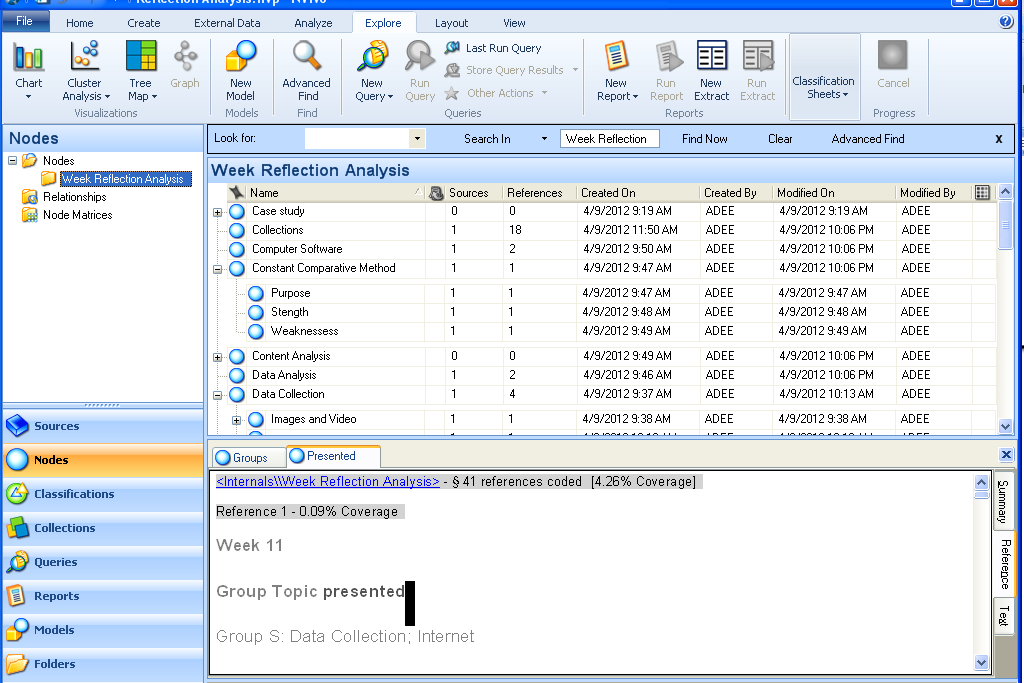


'Edit mode' ensures that team members do not make conflicting changes to content. Control access to a Collaboration Server project How NVivo Collaboration Server manages conflicts between users Each project user group has different permissions for the project. There are three project user groups in a NVivo Collaboration Server project-Readers, Contributors and Project Owners. The Project Owner can add you to a project user group that allows you an appropriate level of access to the project. Your access to a project is controlled by the Project Owner (usually the person who created the project). All the work you do in the project is tracked against your project user profile.
#Using nvivo 12 windows
In a NVivo Collaboration Server project, your project user profile is created from your Windows user account-it is not based on your default NVivo user profile. A project can be opened in any edition of NVivo, but unsupported features will not be accessible. NVivo Collaboration Server supports team members working in a shared project using different NVivo editions (e.g.
#Using nvivo 12 license
You will need a valid license for each version of NVivo that you are using. If you are working in more than one team, you may need more than one version of NVivo installed on your computer to support projects in different versions. Application optionsĮveryone working in a shared project must be using the same version of NVivo. It uses Windows user accounts to provide authenticated, role-based access, so there is no need to manage users inside NVivo.Įach user can set their own NVivo application preferences, even though they are working in the same project. NVivo Collaboration Server allows multiple users to work on NVivo projects at the same time. Open the media file in NVivo, turn on Edit then import the transcript file, following instructions in the appropriate NVivo Help topic below.Collaborate in a Collaboration Server project


 0 kommentar(er)
0 kommentar(er)
